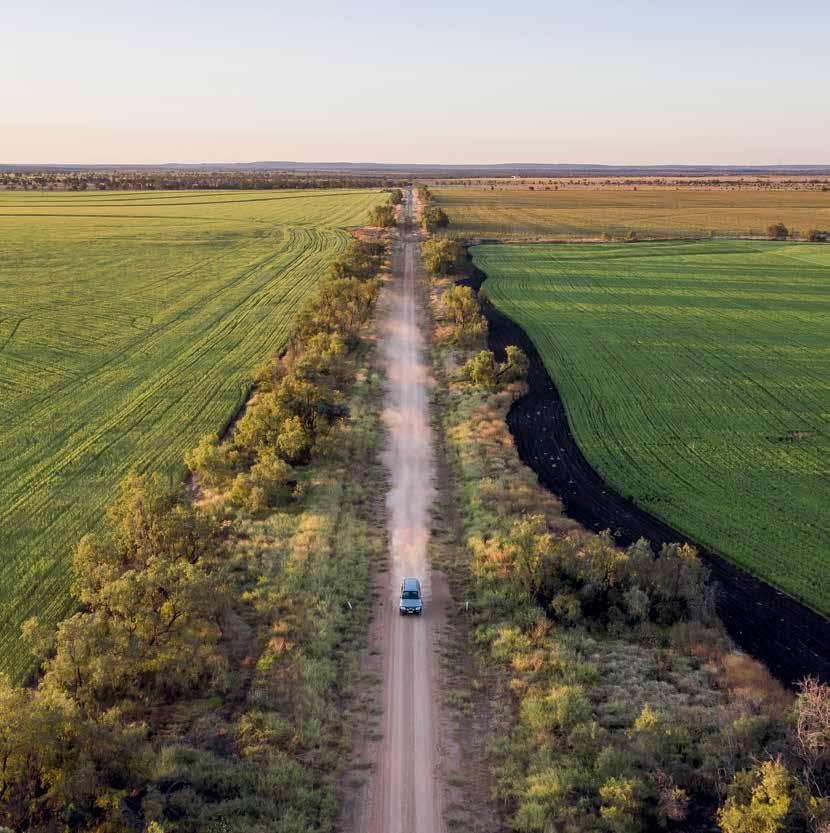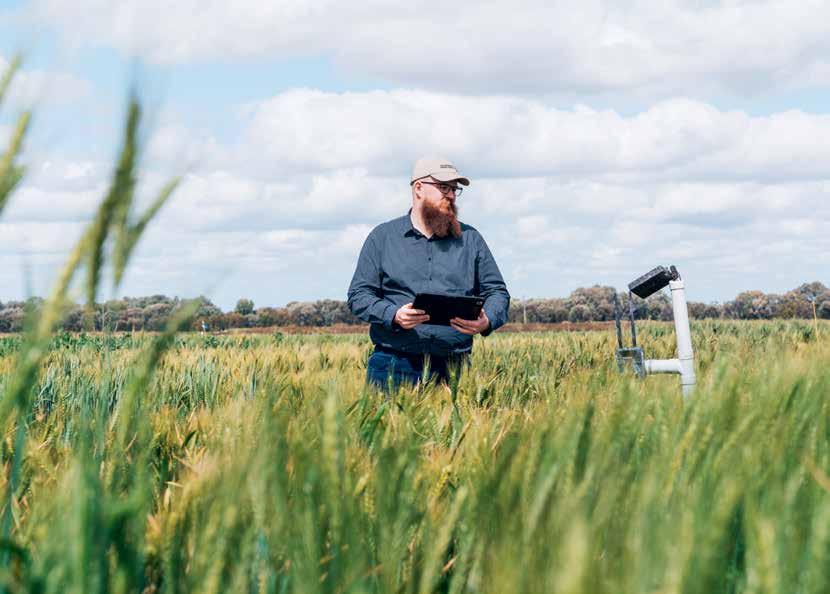

CENTRAL
The future is growing here
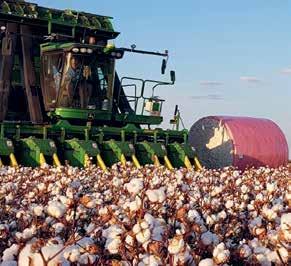
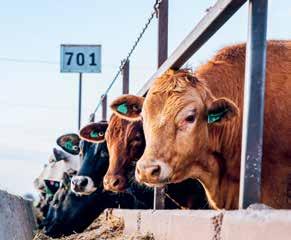
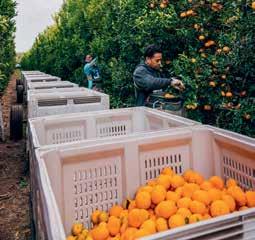
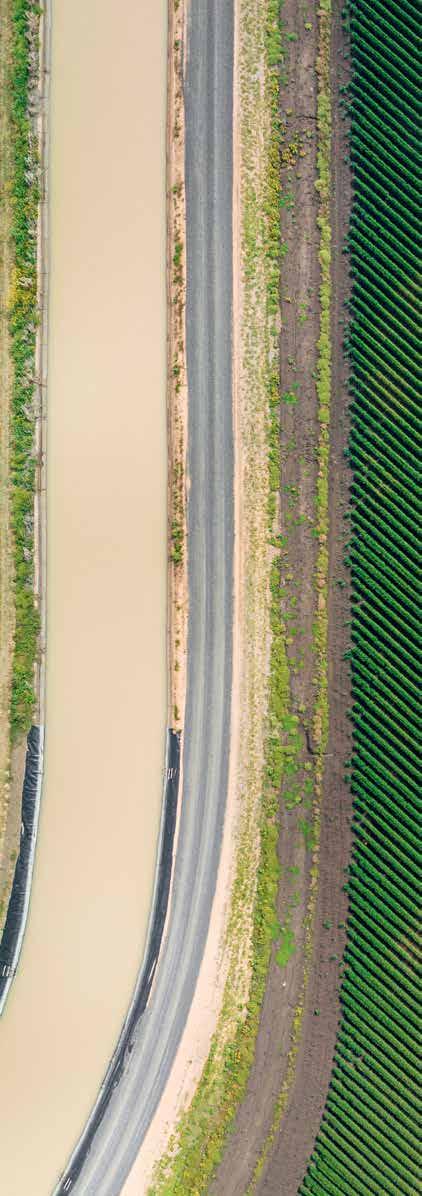
The Central Highlands is one of Australia’s most productive, diverse, and
Home to beef, broadacre cropping, cotton, and horticulture, the Central Highlands generates nearly $1 billion in agricultural output each year.
Its competitive edge lies in a unique combination of fertile black soils, reliable water supply, and a warm subtropical climate that enables year-round production.
Beef production plays a major role in the region’s economy, thanks to high-quality grazing land across the fertile northern Brigalow Belt. The Central Highlands’ climate and Vertosol soils support broadacre cropping of sorghum, wheat, chickpeas, and mungbeans. The region is also a key cotton producer and home to thriving mandarin and table grape industries, made possible by local irrigation schemes.
This productivity is supported by essential infrastructure, including Fairbairn Dam, the Emerald Saleyards, cotton gins, grain handling facilities, and strategic freight links like the CQ Inland Port.
Industry collaboration and innovation further amplify the region’s strengths, through agribusiness networks and research initiatives including the Department of Primary Industries’ Central Queensland Smart Cropping Centre and CQUniversity’s Institute for Future Farming Systems. The sector includes over 1,400 agricultural businesses and supports a dedicated workforce of nearly 2,000 people.
Looking ahead, the Central Highlands is well positioned to unlock growth through targeted investment, with significant opportunities identified in areas such as meat processing, biofuels and oilseed crushing, and the continued development of the Yamala Enterprise Area.
The future is growing here in the Central Highlands.
Strategic Cropping Land (SCL) has been identified by the Queensland Government as a finite resource that must be conserved and managed for the longer term.
Priority Agricultural Areas (PAA) are strategic areas identified by the Queensland Government as containing significant clusters of priority agricultural land uses, ie high value, intensive agricultural uses.
886,397 ha 1,733,948 ha
Priority Agricultural Area (PAA)
15 %





RAINFALL AND TEMPERATURE
COMMODITIES
Mean rainfall (mm)
Mean maximum temperature (0 C)
Mean minimum temperature (0 C)
Source: Bureau of Meteorology
Strategic Cropping Land (SCL)
17 % of QLD PAA of QLD SCL
Other: including Oats, Barley, Maize, Hay and Forage, Turf, Macadamias, and Avocados
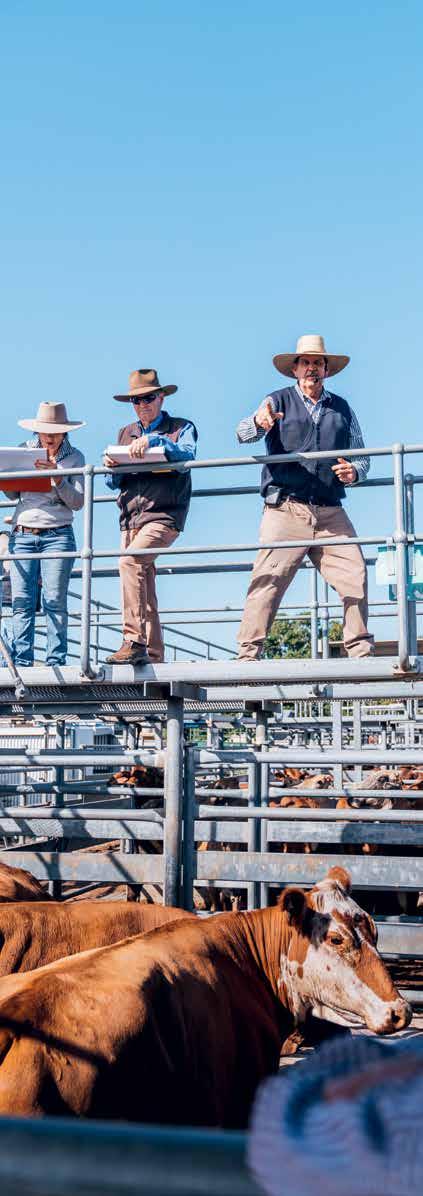
The Central Highlands is one of Australia’s most prolific beef-producing regions, supporting approximately 896,000 head of cattle across 4.7 million hectares of grazing land. This represents the largest cattle population of any local government area in the country.
Beef production is the region’s leading agricultural activity, contributing an estimated $500 million to $600 million annually to the economy.
Renowned for its productive country, the Central Highlands sits within the northern Brigalow Belt and benefits from reliable summer rainfall. These favourable conditions support a mix of native and improved pastures, enabling strong carrying capacities and consistent weight gains.
A wide range of production systems operate across the region, including breeding, growing, and grass and grain finishing. The Central Highlands is also a key producer of certified pasture-fed and organic beef.
The region’s climate supports both tropical (Bos indicus) and temperate (Bos taurus) breeds, enabling producers to tailor their herds to market demands. Specialty breeds such as Wagyu are also run to supply premium, high-value markets.
The Central Highlands serves as a critical and strategic staging point in the northern Australian beef supply chain. Cattle from northern areas are often relocated here for backgrounding, finishing, and feedlotting.
Around 660 livestock operations function as specialist beef producers or in combination with raingrown and irrigated cropping. While the majority are family-owned businesses, prominent corporate producers, including the Australian Agricultural Company (AACo), North Australian Pastoral Company (NAPCo), and Consolidated Pastoral Company (CPC) maintain significant holdings in the region.
SUPPLY CHAIN
Feedlots
With its strategic location, access to water, and proximity to grain supplies, the Central Highlands is ideally positioned for feedlotting.
The region is home to 16 large-scale operations and numerous smaller opportunity feedlots, with a collective capacity exceeding 90,000 Standard Cattle Units (SCUs).
Saleyards
The Emerald Saleyards offer modern handling, weighing, spelling, and dipping facilities and are European Union (EU) accredited. Seven registered selling agents conduct weekly auctions and special sales.
The complex services a broad catchment, drawing cattle and buyers from the Northern Territory, north to Mareeba, west to Winton, and south to Dalby and New South Wales. It also acts as a key changeover point for local finishing prior to Queensland processing.
In the 2023-24 financial year, 78,500 head of cattle were sold through the saleyards, representing seven percent of Queensland’s total saleyard transactions. An additional 17,500 head were sold through private sales and weighs.
Transport
The majority of cattle in the region are transported by road. However, Cattle Train, part of the WATCO Group, provides a weekly schedule of cattle rail services from Emerald to abattoirs in Rockhampton and Brisbane.
Meat Processors
The Central Highlands is serviced by five major exportfocused abattoirs, all located within a 400-kilometre radius of the region.
Organisation
JBS Australia Rockhampton 700
Teys Australia Rockhampton 1,700 Biloela 700
Signature Onfarm Moranbah 200
Thomas Borthwick and Sons Mackay 750
Markets
Central Highlands beef is supplied to domestic customers and exported through the Port of Brisbane. Key international markets include the United States, South Korea, Japan, China, and the European Union.
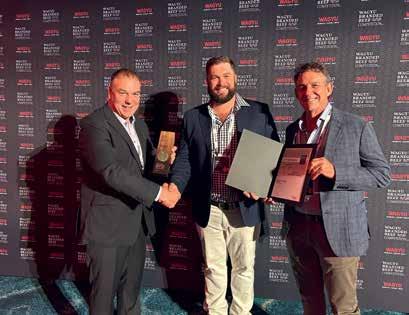
MEET OUR PRODUCERS
Marathon Wagyu
Marathon Wagyu is an award-winning beef cattle producer based in the Central Highlands, proudly built on the rich agricultural legacy of the McCosker family.
The McCoskers have farmed near Emerald since 1929, starting with sheep, Hereford cattle, and crop production before becoming pioneers in Australia’s full-blood Wagyu industry. Today, the third and fourth generations manage a herd of 1,000 full-blood females across Codenwarra and Marathon stations, alongside mixed cropping operations.
With a focus on genetics, animal welfare, and limit feed backgrounding programs, the family consistently produces Wagyu beef renowned for its exceptional marbling, flavour, and quality. DNA testing, artificial insemination, and embryo transfer are central to the program, backed by data-driven insights from lifelong animal traceability and feedlot performance.
The amalgamation of the Marathon and Codenwarra herds has united decades of breeding experience –a legacy of innovation and care that continues to shine through in every award-winning cut.
Laine Thomson, Marathon Wagyu, accepting GOLD at the 2025 Wagyu Branded Beef Competition (Class one – Fullblood Wagyu) for a steer bred from Marathon Wagyu foundation genetics.
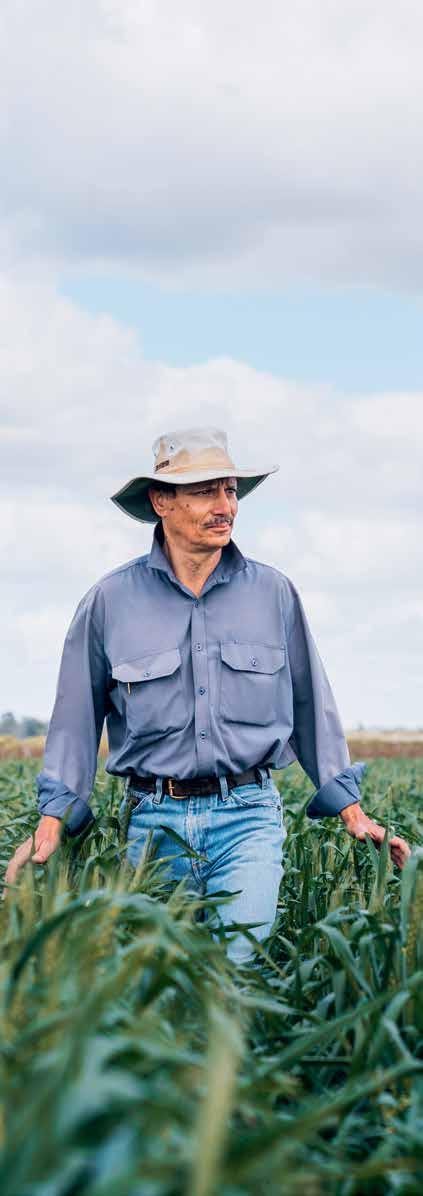
BROADACRE CROPPING
Boasting fertile black soils and a subtropical climate, the Central Highlands is the largest producer of grains and pulses in northern Australia and ranks among Queensland’s leading cropping regions.
Broadacre cropping is the region’s secondlargest agricultural activity, generating between $100 million to $300 million annually in production value, depending on the season.
Sorghum, wheat, chickpeas, and mungbeans are the primary crops grown, with barley, maize, sunflowers, and forage crops also contributing to the region’s diverse agricultural output.
While most regions in Australia can only produce one broadacre crop per year, the Central Highlands benefits from a warmer climate that extends planting windows and accelerates crop maturation. This enables producers to grow both summer and winter crops across the farm, and, in favourable conditions, multiple crops in the same field without yield penalties. The region also experiences a lower incidence of frost damage.
Year-round crop production is further supported by the region’s undulating black Vertosol soils, known for their high fertility and superior water-storing capacity, storing at least 150 millimetres per metre. This allows winter crops to be grown on stored soil moisture, often without the need for incrop rainfall.
Broadacre cropping in the Central Highlands is undertaken by 265 family-owned enterprises, typically running largescale operations. The average area under cultivation is 1,038 hectares, with some larger properties exceeding 10,000 hectares. Local growers are widely regarded for their innovation, including the early adoption of practices like zero till, and for pioneering new techniques such as deep sowing of chickpeas.
Of the region’s 358,000 hectares of cultivated land, over 90 percent relies on rainfall, while 32,000 hectares are irrigated using flood, lateral, and pivot irrigation systems.
SUPPLY CHAIN
Grain Handling Facilities
The Central Highlands is serviced by grain handling facilities in Dingo, Yamala, Capella, and Springsure. In high production years, overflow is directed to depots in Emerald and Gindie.
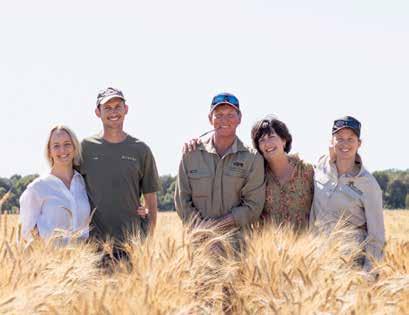
MEET OUR PRODUCERS
Murphy Farming
Containerisation
Seaway operates a grain packing facility at Yamala, with the capacity to process up to 40 containers per day. The facility allows chickpeas, sorghum, and wheat to be containerised close to their source and provides producers with access to a broader range of domestic and international markets.
Transport & Storage
The bulk of grain is transported by road to local handling facilities or domestic markets, while both road and rail are used to move grain to Australia’s east coast ports.
Seaway provides warehousing services, and many growers have on-farm storage, offering flexibility to optimise timing and pricing in the marketplace.
Paul Murphy of Murphy Farming is a fourthgeneration grain farmer who takes pride in seeing the family tradition continue, with the next generation now actively involved in all aspects of the farm.
Murphy Farming has proudly maintained organic certification for 34 years, consistently supplying high-quality cereals, wheats, pulses, and specialty grains to both domestic and international markets. Their commitment to excellence, sustainable farming practices, and environmental stewardship has established the business as a trusted supplier in the industry.
Over the past decade, they have focused on revitalising heritage and ancient wheats, prized for their nutritional value, rich flavour, and resilience in both Central Queensland’s climate and the challenges of organic farming. This, alongside a strong dedication to biodiversity and soil health, ensures they continue to deliver premium-quality grains while preserving agricultural traditions.
With decades of experience, a forward-thinking approach, and the next generation at the helm, Murphy Farming remains committed to quality, sustainability, and innovation.
Amy, Sam, Paul, Cherry and Hannah Murphy.
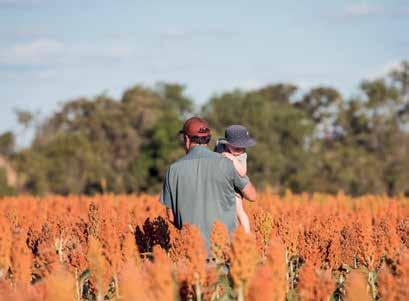
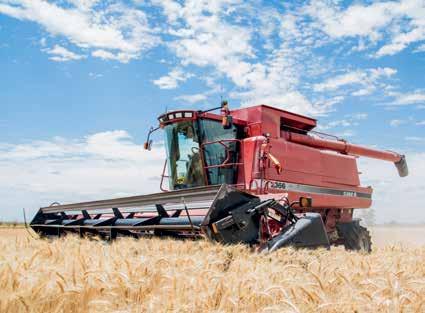
SORGHUM WHEAT
Sorghum is the Central Highlands’ primary summer crop, accounting for 10 percent of Queensland’s total production in 2023-24.
That year, 115 producers planted 79,657 hectares, yielding 169,609 tonnes at an average of 2.1 tonnes per hectare. The total value of the levied crop was $48 million.
Sorghum is well suited to the Central Highlands’ climate, due to its tolerance to heatwaves and moisture stress. Its resilience makes it a reliable and productive summer crop.
The region’s sorghum is used almost exclusively as feed for cattle, pigs, and poultry, with China as the primary export market. It’s also used in Chinese liquor production and shows growing potential for gluten-free human food products (including white sorghum varieties) and biofuel applications.
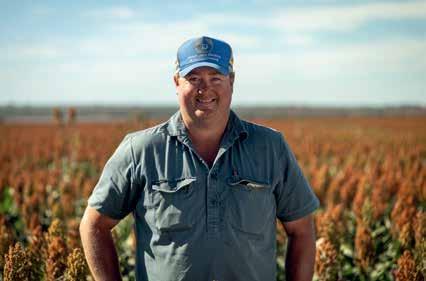
Wheat, grown in winter, is a key component of the Central Highlands’ year-round crop rotation.
In 2022-23, the region experienced a bumper crop, driven by favourable prices, good rainfall, and optimal timing within the crop rotation. A total of 265 producers harvested a record 518,669 tonnes from 179,641 hectares, averaging 2.88 tonnes per hectare. The total value of the levied crop was $179 million.
Most of the region’s wheat is high-protein Australian Prime Hard (APH) or Australian Hard (AH), with protein content ranging from 11.5 to 13 percent. It is valued globally for its quality in breads, ramen, and noodles, with significant exports to Asia. The remainder is medium- to low-protein, supplying domestic milling and feed grain markets.
MEET OUR PRODUCERS
Gersbach Family Farming
Third-generation farmers Tim (pictured) and Courtney Gersbach lead a progressive Central Highlands operation, blending generational knowledge with innovation to improve productivity, soil health, and sustainability.
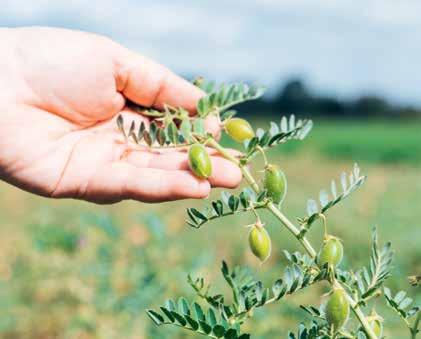
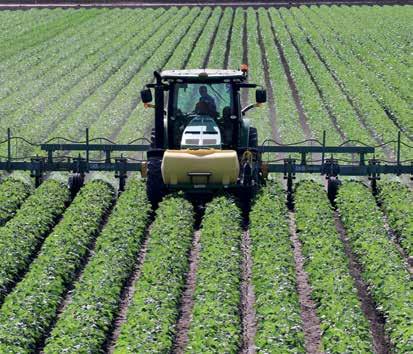
CHICKPEAS MUNGBEANS
Chickpeas are a valuable winter pulse crop for Central Highlands producers, making up a third of Queensland’s 2023–24 total production.
That year, 115 growers planted 34,811 hectares, producing 76,936 tonnes at an average yield of 2.2 tonnes per hectare. The total value of the levied crop was $55 million.
The Central Highlands enjoys a market advantage due to its early harvest window. Its warm, dry climate also lowers disease and pest pressure, resulting in fewer chemical applications and lower production costs.
The region produces large, light-coloured desi chickpeas that are highly regarded for their premium quality in markets such as India, Pakistan, and Bangladesh.
Mungbeans are an increasingly popular summer pulse crop in the Central Highlands.
They are valued for their short growing period, compatibility with crop rotations, low water requirements, and strong market prices.
Unlike other commodities, the mungbean levy isn’t legislated or compulsory, so data is limited. The 2020-21 ABS Agricultural Census reported 12,290 hectares were planted, producing 13,164 tonnes.
The region’s mungbeans are transported to Biloela, Kingaroy, or Dalby for grading and processing. Nearly all are exported, with China as the major market.
Farming 4,000 hectares across three properties with Tim’s parents, Garry and Cathy, the Gersbach family were among the region’s early adopters of zero-till, a transformative shift that improved planting opportunities and moisture retention.
The Gersbachs actively engage in on-farm trials, supported by a long-term partnership with agronomist Graham Spackman, and now Josh Bell. The family’s commitment to research and innovation helps build a resilient, efficient farming system and contributes valuable insights to the Central Highlands’ cropping sector.
Tim also embraces the latest technology and machinery to drive on-farm improvements. The family’s precision planter improves crop uniformity and soil health while cutting seed costs. Their spot-spraying technology has reduced herbicide use by 70 to 90 percent, improved weed control outcomes, and helps manage herbicide-resistant weeds.
Together, these innovations are helping future-proof the operation while supporting a more sustainable and resilient farming system.
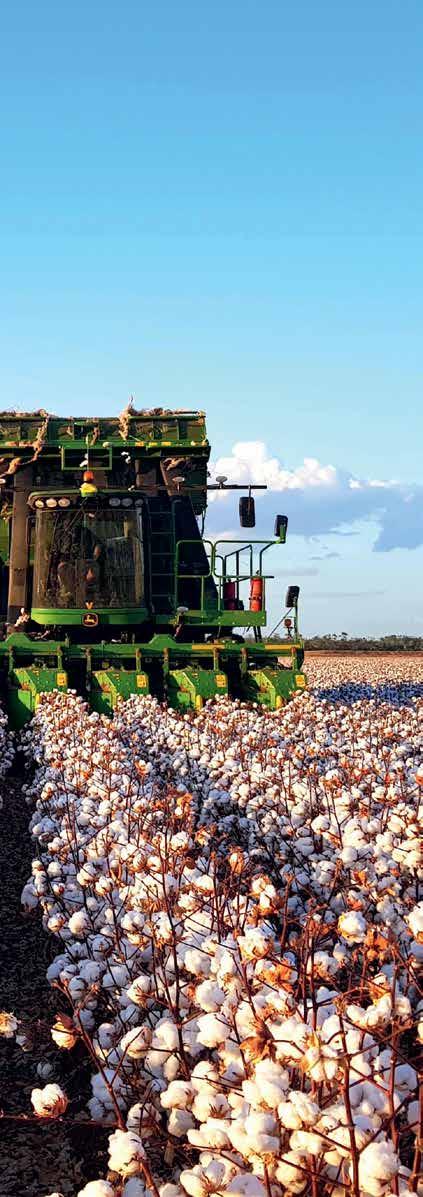
COTTON
With its strong yields, sustainable practices, and a commitment to excellence, the Central Highlands has established itself as one of Australia’s premier cotton-growing regions.
Cotton is the region’s principal irrigated crop, generating $60 million to $100 million annually. It accounts for approximately 10 percent of Queensland’s cotton production and five percent of the national total.
On average, 17,300 hectares are planted to cotton each year, including both irrigated and raingrown crops, producing 169,000 bales. Over the past three seasons, peak planting averaged 25,000 hectares, delivering 261,000 bales at an average yield of 10.5 bales per hectare.
While a variety of crops can be grown under irrigation, cotton is preferred for its superior margins and higher return per megalitre of water. Fluctuations in the total area planted are driven by water availability and global market conditions.
Raingrown cotton is planted when soil moisture and prices are favourable, typically accounting for about a fifth of total production. This share peaked at 53 percent in the 2021-22 season.
Sustainability is a key priority for Central Highlands growers, with more than 80 percent participating in the voluntary myBMP (Best Management Practices) program.
Located within a reef catchment, the region places strong emphasis on nutrient management and biodiversity. This commitment is reflected in practices that support water efficiency, soil health, and responsible pest management. Together, these efforts align with broader Environmental, Social, and Governance (ESG) principles, highlighting the industry’s dedication to sustainable, ethical, and transparent operations.
SUPPLY CHAIN
Cotton Gins
After picking, cotton bales are transported by road to two state-of-the-art cotton gins in Emerald and Yamala.
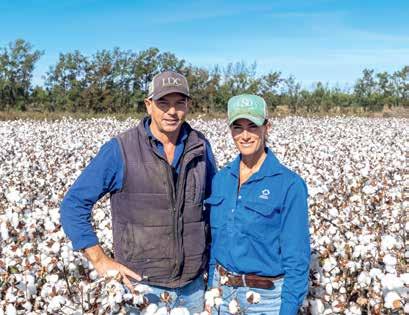
By-Products
A significant by-product of the cotton harvest, fuzzy cottonseed, accounts for around 50 to 55 percent of the total volume. Most is sold as high-protein, high-fibre cattle feed, while a portion is crushed to produce cottonseed oil, which is used in personal care products such as soaps and body lotions.
Even the trash separated during the ginning process, including cotton leaves and bracts, finds a beneficial second life. A local composting business repurposes these by-products, blending them with other materials to create a nutrient-rich soil conditioner that supports circular farming practices.
Markets
The Central Highlands cotton industry is export-driven, with 99.9 percent of production shipped overseas. Cotton is transported by road to the Port of Brisbane for shipment to spinning mills across South Asia, particularly Vietnam and China, both of which have large and expanding textile industries. Other major buyers include Bangladesh and Indonesia.
Global demand is rising for premium quality Australian cotton that is myBMP-certified, traceable, and marketed under Better Cotton, a worldwide cotton sustainability initiative.
MEET OUR PRODUCERS
Geddes Farming
Cam Geddes farms alongside his parents, Andrew and Julie, on their 210-hectare property, Laikipia. They grow irrigated cotton, legumes, and grains, with a strong focus on maximising productivity and using land, water, and inputs as efficiently as possible.
With a smaller footprint, the operation can be managed with a high level of detail. The family closely monitors every aspect of production, allowing them to develop a deep understanding of their land and farming systems and consequently, make informed decisions.
Aspects Cam enjoys most about farming are the process of identifying opportunities for improvement and trialling practical solutions. He focuses on small, continual improvements, tweaking and refining systems over time. This mindset fuels ongoing innovation across the farm.
This dedication to water efficiency is evident through initiatives such as an on-farm recycling system, remote monitoring, and satellite-based crop monitoring.
The Geddes family’s commitment to continuous improvement and smart farming practices ensures the long-term viability and success of their Laikipia operation.
Source: cottondata.com.au; and Cotton Australia Annual Reports, 2014-15 to 2023-24
Cam Geddes and Robyn Lehmann
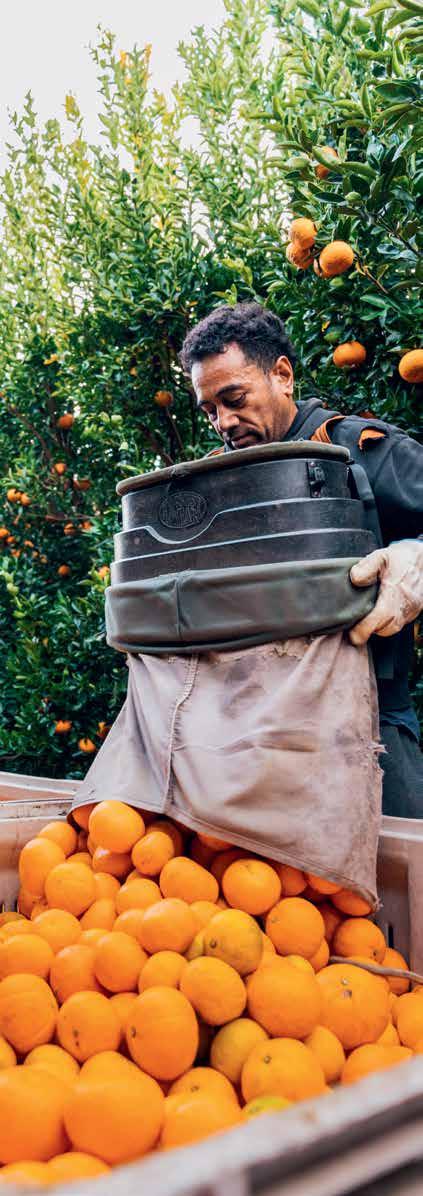
HORTICULTURE
The Central Highlands is a horticultural powerhouse, producing more than a third of Queensland’s mandarin and table grapes each year.
While citrus and grapes dominate production, the region also grows a variety of high-value tree crops including macadamias, avocados, olives, and mangoes.
This exceptional productivity is supported by the Central Highlands’ unique agricultural advantages: a subtropical climate, reliable water supply, and fertile soils. The region’s long, hot summers and short, dry winters are ideal for growing premium fruit and help reduce weather-related risks faced by growers in southern areas. This climate also allows for an earlier growing season, giving producers the opportunity to capitalise on counter-seasonal demand and secure premium prices in both domestic and international markets.
While the full economic impact of the region’s horticulture industry is difficult to quantify due to commercial sensitivities, conservative estimates place its annual contribution between $100 million to $200 million.
The industry’s success is reliant on a seasonal workforce of more than 1,200 people, particularly during peak picking and pruning periods. Programs such as the Australian Government’s Pacific Australia Labour Mobility (PALM) Scheme, alongside various visa options, play a crucial role in meeting these labour needs.
SUPPLY CHAIN
Processing and Packing
Major producers such as Costa Group, Romeo’s Best, Cordoma Farms, and Bottle Tree Farms operate modern on-farm processing facilities, including purpose-built packing and cooling facilities.
Transport
Once packed and palletised, produce is transported by refrigerated road freight to ports, markets, and supermarkets. Most exports are shipped by sea from the Port of Brisbane, taking 15 to 20 days, while air freight is used for express deliveries.
Markets
Some producers operate vertically integrated operations, selling directly into the export market, particularly Southeast and East Asia. Others have established distribution networks across Australia.
Produce is supplied to major wholesale companies and retailers such as Coles, Woolworths, ALDI and IGA, as well as metropolitan markets in Brisbane, Sydney, Melbourne, Adelaide, Hobart, and Perth.
Seasonality
Labour Requirements
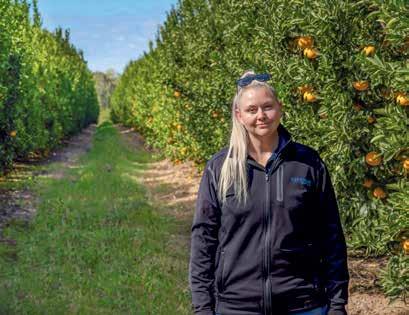
MEET OUR PRODUCERS Superior Productions
The Pressler family is synonymous with excellence and innovation in Australian citrus, establishing the remarkable legacy of 2PH Farms in the Central Highlands. This multigenerational story began with John and Pam Pressler, whose passion for citrus breeding was passed to their son Craig, and now to granddaughter Taylor.
During their time at 2PH, the Presslers pioneered standout cultivars that set new standards in the industry. Among them is the Phoenix mandarin, a premium, seedless variety named to symbolise the family’s resilience after the devastating 2005 citrus canker outbreak, which forced them to destroy their orchards. From these ashes, they rebuilt using cutting-edge technology and a focus on superior genetics.
Their varieties, including the Taylor Lee, Amorette, and Eureka Seedless lemon, currently span over 1,200 hectares across Australia and are grown internationally.
Although 2PH is now owned by the Costa Group, the Presslers remain deeply involved in citrus research and development. Their current work focuses on breeding disease-resistant varieties that require fewer chemical inputs, producing healthier, more sustainable, and ultimately, fruit of superior quality.
Taylor Pressler
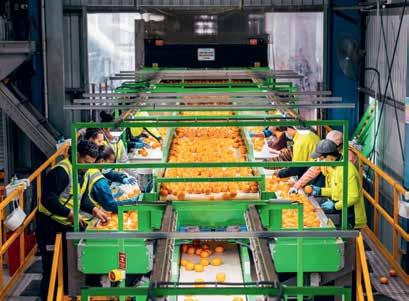
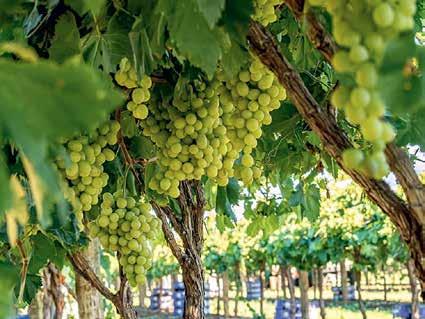
MANDARINS TABLE GRAPES
Citrus is the Central Highlands’ leading horticultural crop, with more than three and a half million cartons produced annually.
Around 1,800 hectares are under cultivation, with 1,470 hectares currently bearing fruit, representing about onethird of Queensland’s total citrus trees.
Production is centred around Emerald and led by major operators Costa Group and Superior Productions. Fruit from the region is in high demand, with exports estimated to exceed $80 million annually and an additional $100 million estimated for domestic sales.
HANDS BEHIND THE HARVEST
Seasonal Workers
The Central Highlands supports a wellestablished table grape sector, covering 820 hectares.
The industry is driven by eight key producers, including Cordoma Farms, Romeo’s Best, Perfection Fresh, and Wurlin.
Annual production is valued between $15 million and $20 million, with the region contributing up to 40 percent of Queensland’s total table grape output. This scale and consistency reinforce the Central Highlands’ reputation as a key supplier to both domestic and export markets.
Seasonal workers have become the backbone of the Central Highlands’ citrus and table grape industries, bringing skills and reliability to farms across the region.
Since the early 2010s, workers from the PALM Scheme have supported the region’s horticulture sector. That support proved critical during COVID-19, when the Central Highlands became the first region globally to fly in workers, allowing fruit to be picked while the world stood still.
Many workers return season after season, building deep ties with local growers and communities. One of them is Samisoni Taufa, whose dedication earned him special recognition after planting more than 500 hectares of citrus at Costa Group’s 2PH Farms. When he’s not in the orchard, you’ll find him proudly pulling on a jersey for the local Otufelenite rugby football team – three-time premiership champions.

NICHE & EMERGING
The Central Highlands’ agricultural landscape is constantly evolving, with producers exploring opportunities in emerging and niche crops. While macadamias and turf have an established presence, newer crops like sesame and pongamia are in the trial stages, offering promising diversification opportunities for local producers.
MACADAMIAS
Though not a traditional macadamia-growing region, the Central Highlands have been growing the nut commercially since the early 2000s. Around 146,000 trees produce approximately 1,000 tonnes of nut-in-shell annually. Harvested nuts are processed in Bundaberg, supporting Queensland’s wider macadamia supply chain.
TURF
Turf is grown on 11 hectares in Emerald, producing three highperforming varieties year-round. As Queensland’s only regionally based turf farm, it offers reduced freight costs and faster delivery to customers across Central and Western Queensland.
Live turf is transported in refrigerated trucks to maintain freshness and quality on arrival. Demand continues to grow, particularly from councils, developers, and community projects seeking instant green space.
SESAME SEEDS
New black and white non-shattering sesame varieties are being trialled in the Central Highlands as a high-value summer rotation crop, with the potential to grow into an industry similar in scale to mungbeans and chickpeas. With rising global demand for sesame oil, research is underway to support best-practice production and help local growers adopt this emerging crop.
PONGAMIA
Pongamia, a native Australian oilseed tree, is being trialled as a sustainable, long-term solution for biodiesel production. Known for its resilience and nitrogen-fixing properties, pongamia offers environmental and economic benefits, particularly on marginal land.
Two trials are underway in the Central Highlands to assess its adaptability, yield, and commercial potential. One, led by Energreen Nutrition, spans 100 hectares near Emerald and is running from 2024 to 2029. It will generate critical data on growth rates, harvesting methods, and overall viability. These trials are an important step toward establishing pongamia as a scalable, green energy crop for the region and beyond.

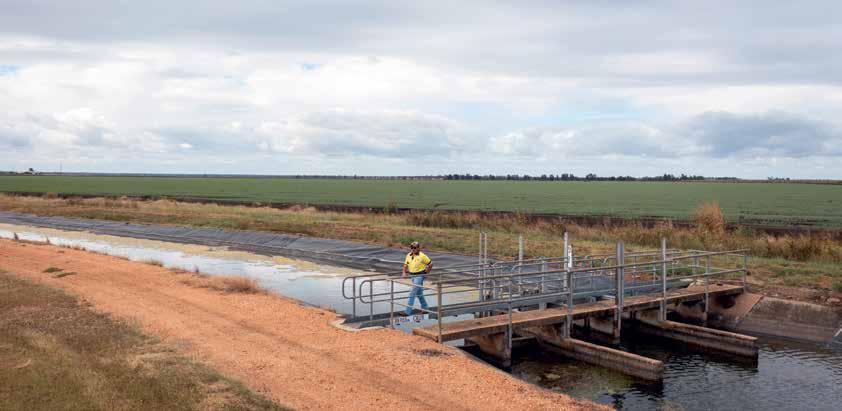
WATER & IRRIGATION
The Central Highlands’ water resources, including the Nogoa Mackenzie, Dawson Valley, and Rookwood Weir supply schemes, provide secure and reliable water allocations for the region’s agricultural industry.
NOGOA MACKENZIE WATER SUPPLY SCHEME
Established in 1968, the Nogoa Mackenzie Water Supply Scheme (WSS) was developed to meet the agricultural, mining, and urban water needs of the Central Highlands. The scheme’s central feature is the conservation of water from the Nogoa River by Fairbairn Dam. Water is then delivered through two gravity-fed irrigation channel systems, Selma (47km) and Weemah (53km), as well as the river.
Water distribution is managed by the locally owned Fairbairn Irrigation Network (FIN), while Sunwater oversees the bulk water assets, including the dam, weirs, and pipeline infrastructure.
Fairbairn Dam
Completed in 1972, Fairbairn Dam is an earth-filled embankment built across the Nogoa Gap, 19 kilometres upstream of Emerald. It forms Lake Maraboon, Queensland’s second-largest water storage facility. The lake sits 31.7 metres above the riverbed, with a storage capacity of 1,301,000 megalitres and a surface area of 15,280 hectares at full supply.
Weirs
The scheme includes four weirs that regulate water storage and management:
> Nogoa River Selma (1,180ML) and Bedford (19,973ML) weirs
> Mackenzie River
Bingegang (8,060ML) and Tartrus (12,000ML) weirs
Water Entitlements
Water entitlements grant an ongoing right to an exclusive share of available water within a catchment. They are independent of land titles and can be bought, sold, or leased.
The Nogoa Mackenzie WSS currently has 231,859 megalitres of water entitlements. Of this, 191,664 megalitres are used for agriculture. Both permanent and temporary water sales are available, with delivery charges competitively priced compared to other regional schemes.
Water Allocations
The volume of water available is calculated annually and referred to as an announced allocation. This is determined by seasonal conditions and water levels.
Two types of water allocations are available:
> High priority: Used for urban and industrial purposes, as well as high value crops such as trees and vines.
> Medium priority: Less reliable than high priority but lower in cost and available in larger volumes, making it wellsuited for agricultural production.
The Queensland Government sets water allocation security objectives for the scheme, using models incorporating historical rainfall and streamflow data.
> High priority: 98% monthly reliability
> Medium priority: 82% monthly reliability
Fees and charges for rural irrigation allocations are regulated by the Queensland Competition Authority.

Source: Sunwater Water Supply Scheme Statistics 2023-24
DAWSON VALLEY WATER SUPPLY SCHEME
Landholders near Duaringa benefit from the Dawson Valley WSS, which includes a network of channels and six weirs along the Dawson River.
The scheme supports 61,737 megalitres of water entitlements, with 54,534 megalitres allocated for irrigation. Sunwater manages river allocations and bulk water supply, while Theodore Water oversees water delivery to allocation holders.
ROOKWOOD WEIR WATER SUPPLY SCHEME
The Rookwood Weir WSS, established in 2023, introduced 86,000 megalitres of water entitlements, with 37,500 megalitres set aside for agriculture. Managed by Sunwater, the scheme supports producers near the junction of the Dawson and Mackenzie Rivers and along the Fitzroy River.
UNSUPPLEMENTED WATER
Unsupplemented water is surface water or groundwater that is not reliant on infrastructure for storage or distribution. It is managed by the Department of Local Government, Water and Volunteers.
Accessing unsupplemented water requires authorisation, as it is held under water licences (attached to land), water allocations (not attached to land), and water permits (temporary).
Surface
Surface water is managed within the Comet, Theresa Retreat, and Nogoa Mackenzie Water Management Areas. Water allocation trading is available within these areas, and water can be obtained through permanent transfer or lease of a water allocation.
Water allocations have daily and annual volumetric limits and are governed by streamflow rates.
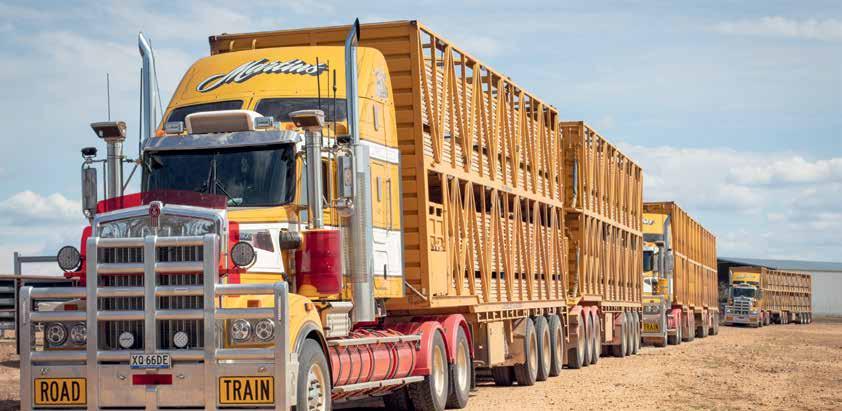
FREIGHT & LOGISTICS
The Central Highlands’ strategic location facilitates efficient freight movement, connecting agricultural produce to domestic processors and markets, as well as export destinations, via robust road, rail, and air networks.
ROAD
The Central Highlands is strategically located at the intersection of two major highways and freight routes:
> Capricorn Highway (east-west): Linking Rockhampton, Longreach, and extending to North West Queensland and the Northern Territory.
> Gregory Highway (north-south): Connecting Charters Towers to New South Wales and serving as inland freight corridor between Cairns and Melbourne.
Major roads are sealed, dual-carriageway, weather-resistant, and capable of accommodating Type 1 Road Trains and B-Doubles. The region is well-serviced by local and national road transport operators, offering livestock, general and dry freight, and refrigerated freight capabilities.
Central Queensland accounts for 30 percent of all beef transactions in the state, with key freight routes carrying high volumes of cattle trucks alongside passenger vehicles. Through the Inland Freight Route and Queensland Beef Corridors programs, the Queensland and Australian Governments are investing more than $1 billion in road upgrades across the region.
RAIL
The Central Highlands is connected to key domestic and export markets via Queensland Rail’s Central West System, which runs over 780 kilometres from Emerald to Hughenden via Longreach and Winton. This system links
with the Aurizon Blackwater System near Emerald, which is electrified and capable of heavy rail (20-tonne axle load) and caters to general freight, block trains, and passenger services. Common freight includes coal, grain, livestock, and containerised goods. There is strong potential to expand rail freight, especially with concurrent development in logistics and value adding.
AIR
Emerald Airport, located six kilometres south of Emerald, features two runways and accommodates fixed-wing and rotary aircraft. Daily services by QantasLink and Virgin Australia (in partnership with Air Alliance) connect Emerald to Brisbane, moving more than 200,000 passengers annually.
GAM Air Services provides daily air freight links to and from Brisbane, as well as local towns such as Barcaldine and Longreach. The Royal Flying Doctor Service has expanded its patient transfer operations, developing Emerald into a Medivac Transfer Centre. The airport is serviced by several hire vehicle companies and offers short and long term parking.
PORT
The Central Highlands is ideally positioned for efficient access to eastern seaports by road or rail. Primary port connections include Gladstone (369 km from Emerald), Mackay (393 km), Townsville (612 km), and Brisbane (886 km).













DRIVING REGIONAL LOGISTICS
CQ Inland Port
The Central Queensland Inland Port (CQIP) is a 240-hectare master-planned industrial estate at Yamala, east of Emerald.
With direct access to the Capricorn Highway and western rail line, it operates as a 24/7 intermodal freight hub, streamlining road-to-rail transfers for domestic and export supply chains.
Developed through public and private sector investment, CQIP offers capabilities for diverse logistics and value-adding services, including container handling, warehousing (including cold storage), quarantine and container services, and product assembly and packing. Located within the Yamala Enterprise Area (YEA), a Special Industry Zone, it caters to a range of industrial uses under a compliant planning framework.
Connected by heavy-duty rail to major eastern ports, CQIP lowers transport costs and improves market access for regional producers. Tenants include GrainCorp’s Yamala depot and Seaway’s grain operations, with ongoing opportunities for investment and expansion.
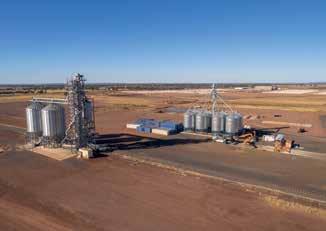
Gladstone
Port Alma
Bundaberg
Longreach
Roma
Dalby
Rolleston
Tambo
Emerald
Townsville
Mackay
Rockhampton
Biloela
Moura
Capella
Springsure
Dingo
Clermont
Charters Towers
Brisbane
Toowoomba
Yamala
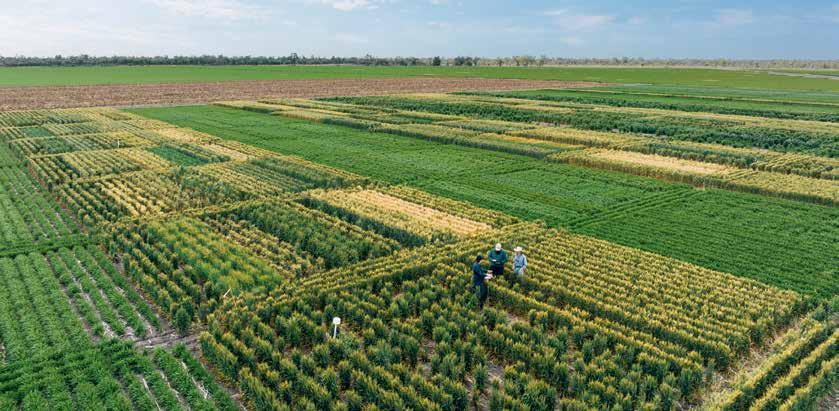
RESEARCH & EDUCATION
The Central Highlands delivers practical and locally relevant agricultural research to drive innovation and sustainability, while education and training programs are building a skilled, industry-ready workforce for the future.
RESEARCH
Queensland Department of Primary Industries
The Queensland Department of Primary Industries (DPI) provides research and extension services across Central Queensland. With staff based in Emerald, DPI works directly with local producers and agribusinesses to improve productivity and profitability by identifying new opportunities, managing risks, building resilience, and strengthening supply chains. Its regional presence ensures that research outcomes are practical, relevant, and tailored to industry needs.
DPI also collaborates with universities and delivers research, development and extension activities on behalf of Australia’s Research and Development Corporations (RDCs), further supporting innovation and the adoption of best practice across the agricultural sector.
Central Queensland Smart Cropping Centre
Established by DPI and based in Emerald, the Central Queensland Smart Cropping Centre (CQSCC) is a flagship innovation hub focused on future-ready farming systems.
Guided by industry and aligned with Queensland’s Primary Industries Prosper 2050 strategy, the centre develops resilient, climate-adaptive, and automation-ready systems that drive long-term productivity, profitability, and sustainability for Central Queensland’s cropping sector.
Current work includes pilot programs to improve digital connectivity and fast-track agtech adoption throughout the region.
CQUniversity
CQUniversity’s Emerald-based research is led by the Institute for Future Farming Systems (IFFS), which connects researchers with producers to solve real-world challenges across livestock, cropping and horticulture.
In the Central Highlands, IFFS research has focused on areas such as northern-adapted crops, spice production, livestock parasitology, disaster resilience, animal welfare, agtech development, agricultural supply chains, and science communication.
CQUniversity also supports PhD candidates based in the region, along with students conducting field research into Central Highlands farming systems.
EDUCATION
CQUniversity
As Queensland’s first dual-sector university, CQUniversity offers education pathways from trade apprenticeships to postgraduate qualifications.
The Emerald campus delivers a three-year full-time (or six-year part-time) Bachelor of Agriculture, with majors in agronomy, agtech, and livestock. The applied, industryfocused program includes professional placements, research projects, capstone case studies, and complementary minors. Many graduates remain in the Central Highlands, building careers in agricultural extension, agribusiness banking, farm management, agronomy, research, agtech, sales, consultancy, and agribusiness ownership.

The campus also offers a Certificate III in Horticulture and supports apprenticeships in trades such as engineering fabrication, automotive air-conditioning, mechanical, and mobile plant technology.
LEADAg
LEADAg (Leading, Educating and Developing) is a residential, skills-based program coordinated by CHRRUP that prepares young people for careers in agriculture.
Delivered in two streams—LEADAg Youth (ages 15–17) and LEADAg Plus (ages 18–30)—the program reduces barriers to entry through hands-on training, industry exposure, and mentorship. Participants gain accredited qualifications such as Rural First Aid and CPR, along with practical experience in livestock handling, irrigated cropping, machinery operation, agtech, biosecurity, and pasture management.
Springsure Cattle Camp
The Springsure Cattle Camp is a unique and highly sought-after program for young cattle enthusiasts aged five to 17. Drawing participants from across Central Queensland and beyond, the camp provides hands-on education in cattle handling, junior judging, parading, branding, and auctioneering.
Supported by a dedicated committee and experienced instructors, the camp helps build confidence, practical skills, and industry connections, nurturing the next generation of beef industry leaders in the Central Highlands.
LOCAL INITIATIVE – NATIONAL IMPACT
Teach the Teacher
For more than 30 years, the Central Highlands’ Teach the Teacher initiative has taken local educators beyond the classroom to experience the region’s agricultural sector firsthand.
Through tours of farms and key infrastructure like Fairbairn Dam and cotton gins, primary and high school teachers gain practical insights into farming practices, water use, and agribusiness operations.
The program connects educators with the cotton and irrigation communities, combining education with hands-on experience and fun. It raises awareness of how agriculture can be meaningfully integrated into classroom teaching, helping teachers bring real-world examples into their lessons.
Driven by the Central Highlands Cotton Growers and Irrigators Association in partnership with Cotton Australia, this locally grown success story has expanded nationally, empowering educators and strengthening the link between schools and regional agriculture.

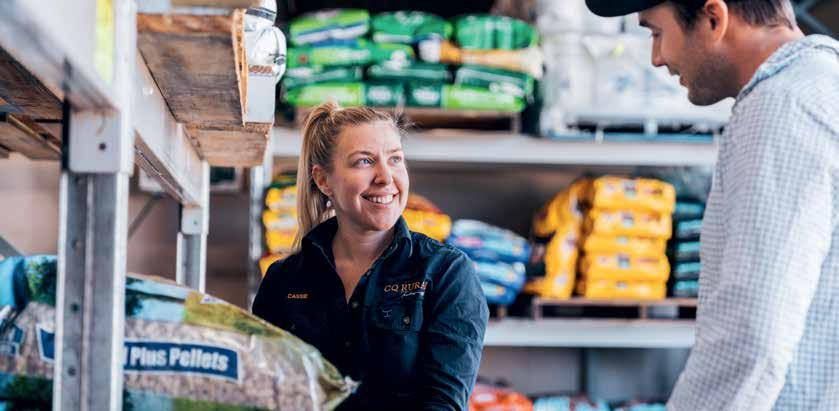
AGRIBUSINESS SERVICES
The Central Highlands’ thriving agricultural sector is supported by a dynamic ecosystem of professional services, cutting-edge technology, and robust product and equipment supply. The region provides comprehensive expertise and solutions not only to local producers but increasingly to clients across Australia and internationally.
CONSULTING
Local consultants offer extensive experience across agribusiness management, agronomy, animal health, and environmental stewardship. Their understanding of the region’s soils, seasons, and farming systems enables them to deliver tailored advice that helps producers plan with confidence, manage risk, and adapt to change.
Agribusiness support ranges from business planning and finance to succession planning, land tenure advice, property valuation, and strategic decision-making, reflecting the complex realities of modern farming.
In the paddock, consultants provide expert guidance on varietal selection, crop rotation, fertiliser strategies, irrigation planning, and integrated pest and weed control. Animal health specialists assist with pasture and fodder management, breeding programs, nutrition, and disease surveillance. Environmental services include compliance reporting, water and soil monitoring, and vegetation management, all contributing to sustainable, long-term land use.
TECHNOLOGY
The Central Highlands is rapidly becoming a hub of agricultural innovation, with local businesses developing and servicing technologies that transform farm operations from the ground up to the cloud. Precision tools, datadriven insights, and custom machinery are widely used locally and increasingly exported to growers across Australia and beyond.
Producers benefit from expertise in drone applications, GPS and RTK machine control, precision irrigation, and remote livestock monitoring. These businesses provide full-service solutions, from equipment design and installation to data analysis and connectivity, enabling smarter, more efficient farm management.
A standout is SwarmFarm Robotics, founded in 2012 in the Central Highlands. Its autonomous platforms reduce chemical use and improve sustainability through precise, site-specific management.
EQUIPMENT AND PRODUCTS
The Central Highlands supports a thriving agricultural services and manufacturing sector, providing the machinery, parts, and products producers need to stay productive. Regional businesses manufacture and maintain tractors, harvesters, cotton pickers, spray rigs and soil cultivation equipment, along with livestock handling systems and irrigation infrastructure.
EVENTS
AGTECH
The Central Highlands hosts AGTECH, a major biennial innovation and technology event for the Australian agricultural community. Held in Emerald, the forum brings together leading minds at the intersection of agriculture, machinery, and technology to explore the future of agribusiness and showcase the latest innovations designed to improve farm and business profitability.
Ag-Grow Field Days
Ag-Grow is a three-day agricultural field day held annually in Emerald each June. Featuring a multi-breed bull sale, campdraft, horse sale, and working cattle dog trials and sale, the event attracts producers and visitors from across Queensland. With over 300 exhibitors showcasing the latest in machinery, products, and services, Ag-Grow celebrates the region’s vibrant rural lifestyle and strong agricultural traditions.
REGIONAL REPRODUCTION HUB
Insight Repro
Insight Repro is strengthening livestock breeding across Central and Western Queensland by providing crucial on-farm and laboratory-based fertility services.
Founded in 2022 by morphologist Jane Armstrong, who grew up on a family cattle property at Blackall, and veterinarian Dr Neil Farmer, who brings extensive herd management expertise, the Emerald-based facility fills a critical regional gap to make reproductive technologies more accessible.
Serving a diverse clientele, from large commercial and stud breeders to family farms, Insight Repro offers tailored solutions including semen testing, IVF, embryo transfers, and pregnancy testing, covering a five-hour radius.
The facility’s 5,000L bulk liquid nitrogen tank supports not only vital genetic preservation for the livestock industry but also provides essential services for the medical, mining, and engineering sectors across the region.

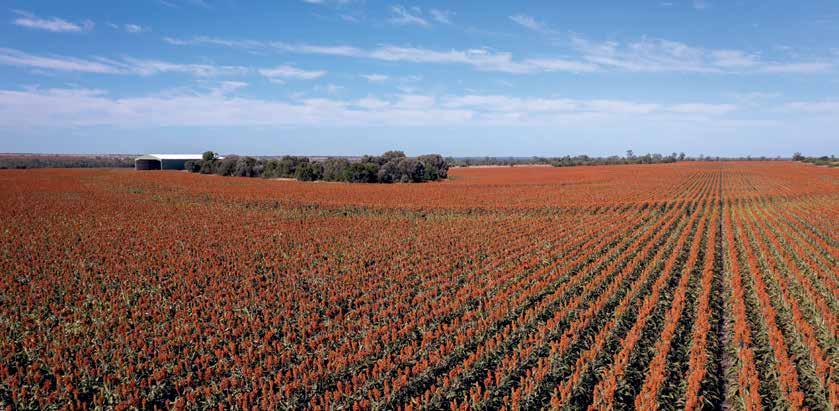
LOOKING TO THE FUTURE
The Central Highlands is well-positioned to unlock significant agricultural growth through targeted investment and strategic development.
The 2025 Agribusiness Futures Statement, commissioned by Central Highlands Development Corporation (CHDC) and DPI and prepared by Acclimate Partners, identifies key opportunities to enhance the region’s productivity, market access, and economic resilience. Informed by research and industry consultation, the Statement provides a forward-looking view of how the region can build on its strengths and respond to emerging challenges.
SUPPLY CHAIN EFFICIENCIES AND VALUE-ADDING OPPORTUNITIES
Yamala Enterprise Area
The YEA is rapidly emerging as a strategic intermodal freight and logistics hub, backed by public and private investment. Designed to optimise rail and road freight, YEA will reduce economic leakage, improve export capacity, and attract value-adding agricultural industries.
With key infrastructure already underway, including a rail spur and road upgrades, further development of water supply and access is critical to realising the area’s full potential. YEA offers strong growth prospects, positioning the region as a competitive gateway for sustainable agricultural production, processing, and direct market access.
Meat Processing Facility
A new meat processing facility in the Central Highlands could help address long-standing challenges for local beef producers, especially those targeting premium markets such as Wagyu. Current constraints in processing capacity and transport distances affect both profitability, animal welfare, and meat quality. A new facility would deliver significant economic value, positioning the Central Highlands as a leading hub for premium beef production and processing.
NEW MARKET OPPORTUNITIES
Carbon and Nature Repair
Embracing sustainable land management and low-emission practices offers Central Highlands producers significant opportunities to enhance farm value and build resilience. These practices, such as soil carbon sequestration, lowemission animal diets, and biodiversity restoration, align with growing consumer and market demand for environmentally responsible agriculture.
Such initiatives can diversify farm income, improve climate resilience, and generate new revenue streams.
Opportunities include participation in environmental markets, such as the Australian Government’s Emissions Reduction Fund, Queensland’s Land Restoration Fund, and the new Nature Repair Market, which reward biodiversitypositive outcomes.
Biofuels and Oilseed Crushing
Biofuels made from crops and agricultural waste offer strong opportunities for cleaner energy and circular farming systems. With global demand rising and current production limited, the Central Highlands’ established grains sector, export infrastructure, and investment readiness position it to capitalise on this growth. While high production costs and policy uncertainty remain challenges, targeted investment and supportive policies could enable the region to play a key role in Australia’s biofuel industry.
A significant local example of this potential is Energreen Nutrition’s planned oilseed-crushing plant at the YEA. With Queensland Government funding, this facility aims to crush 70,000 tonnes of oilseeds annually, including future plans for pongamia to produce sustainable aviation fuel (SAF) feedstock. This initiative underscores the Central Highlands’ role in developing Australia’s domestic bio-fuel capacity and decarbonising the transport sector.
WORKFORCE AND UPSKILLING
Labour shortages remain a critical issue in the Central Highlands. While automation may reduce the need for some manual roles, the increasing use of technology means upskilling is essential. Training should align with industry needs, particularly in agtech and environmental management, and promote agriculture as a future-focused career. Attracting and retaining skilled workers will also require improved infrastructure, housing, and services to support liveability and leverage regional migration trends.
LEADING Agricultural Region
AGTECH ADOPTION
Agtech offers significant opportunities to boost productivity, efficiency, and profitability across Central Highlands farms through automation, artificial intelligence, and data-driven decision-making. These innovations help address rising input costs, market volatility, and the need for sustainable food systems.
However, widespread adoption faces several barriers, including high upfront costs, technical complexity, limited connectivity, and a lack of trusted intermediaries. The CQSCC is crucial in overcoming these challenges. Through pilot programs, tailored solutions, and practical demonstrations, the CQSCC supports producers, builds confidence, and derisks early agtech integration for both cropping and livestock enterprises.
RENEWABLE ENERGY AND ONFARM SYSTEMS
Central Highlands producers are increasingly adopting renewable energy to reduce costs, lower emissions, and enhance sustainability. Agrivoltaics combine solar generation with farming, offering solutions like vertical panels or overhead trellises for cropping and livestock, contributing to productivity gains and improved animal welfare.
Beyond on-site generation, Virtual Power Plants (VPPs) and microgrids optimise local energy use by connecting multiple small-scale systems. This enables greater energy self-reliance and strategic selling of surplus power. Power Purchase Agreements (PPAs) further secure returns with stable pricing. By coordinating and networking locally, producers can build resilient energy systems, enhancing regional energy security, financial stability, and grid reliability.
The Central Highlands is gaining national recognition as a hub for innovation, productivity, and diversity across agriculture. With almost $1 billion in annual output and strengths across beef, cropping, horticulture, and emerging industries, the region is well-positioned to lead.
To fully realise this potential, coordinated investment in research, infrastructure, and promotion is essential. Flagship developments, initiatives and events like SwarmFarm Robotics, CQSCC, Farm to Fine Dining, AGTECH and Frontier CQ are lifting the region’s profile, but sustained funding, collective marketing, and strategic partnerships are needed to scale impact.
By building on current momentum and showcasing capability, the Central Highlands can strengthen its reputation as one of Australia’s most investable and forward-focused agricultural regions.
BIBLIOGRAPHY
Australian Bureau of Statistics, 2022, Agricultural Commodities, Australia – 2020–21: Agricultural commodity estimates by 2021 Local Government Areas (LGA), ABS, Canberra
Australian Bureau of Statistics, 2021, Value of Agricultural Commodities Produced, Australia, 2020–21: Gross and local value estimates by 2021 Local Government Areas (LGA), ABS, Canberra
Australian Bureau of Statistics, 2024, Australian Agriculture: Broadacre Crops, 2022–23 financial year, ABS, Canberra. Available at: https://www.abs.gov.au/statistics/industry/agriculture/australian-agriculture-broadacre-crops/2022-23
Australian Bureau of Statistics, 2025, Australian Agriculture: Broadacre Crops, 2023–24 financial year, ABS, Canberra. Available at: https://www.abs.gov.au/statistics/industry/agriculture/australian-agriculture-broadacre-crops/2023-24
Bureau of Meteorology, n.d., Climate statistics for Emerald Airport (Station 035264). Available at: http://www.bom.gov.au/ climate/averages/tables/cw_035264.shtml
Cotton Australia, 2015–2024, Annual Reports 2014–15 to 2023–24, Cotton Australia, Sydney. Available at: https://cotton.org.au
Cotton Australia, n.d., CottonData: Australian Cotton Industry Data Dashboard, Cotton Australia, Sydney. Available at: https:// www.cottondata.com.au
Department of Environment and Science, 2022, Queensland Land Use Mapping Program: Central Highlands Extract, Queensland Government, Brisbane
Department of Primary Industries, n.d., DataFarm: Agricultural Exports – Queensland Value and Volume, Queensland Government, Brisbane. Available at: https://www.dpi.qld.gov.au/news-media/campaigns/data-farm/export-trade
Department of Primary Industries, n.d., DataFarm: Our Regions – Key Agricultural Regions in Queensland (LGA), Queensland Government, Brisbane. Available at https://www.dpi.qld.gov.au/news-media/campaigns/data-farm/regions
Department of Primary Industries, 2024, AGTrends Spatial, 2024, Queensland Government, Brisbane. Available at: https://qldspatial.information.qld.gov.au/AGTrendsSpatial/
Meat and Livestock Australia, 2024, National Livestock Reporting Service: Saleyard Survey Results 2023–24, MLA, North Sydney
REMPLAN, n.d., Central Highlands Economic Profile, REMPLAN. Available at: https://app.remplan.com.au/centralhighlands/ economy/summary
Sunwater, 2024, Water Supply Scheme Statistics 2023–24, Sunwater, Brisbane. Available at: https://www.sunwater.com.au
PHOTO CREDIT
Images courtesy of Bindi Taneal Photography, Central Highlands Regional Council, Digital Black, Insight Repro, Jacque Donaldson Photography, Jesse Lindemann, Marathon Wagyu, Murphy Farming, Nathan White Images, Renee Anderson, Greg Kauter and Central Highlands Cotton Growers and Irrigators Association.
ACKNOWLEDGEMENT OF COUNTRY
The Central Highlands Agricultural Capability Statement is proudly supported by the Queensland Government’s Department of Primary Industries.
Central Highlands Development Corporation respectfully acknowledges the Traditional Custodians of the Lands across the Central Highlands and pays its respect to their Elders past and present.
Our registered office is located on the Lands of the Western Kangoulu Peoples.
ABOUT CHDC
CHDC is the lead economic and tourism development agency for the Central Highlands in Queensland, Australia.
For more than 25 years, CHDC has worked in partnership with industry, business, government, and community to drive growth, enable innovation, build capability, and deliver economic outcomes.
In agriculture, CHDC leads and supports a wide range of projects and initiatives to strengthen the sector’s productivity, sustainability, and growth. We provide relevant data and insights, facilitate networks, host events, and offer practical tools that help agribusinesses thrive.
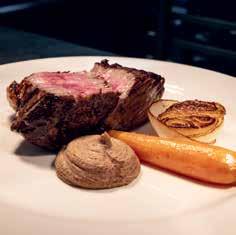
FARM TO FINE DINING
An annual produce showcase that connects Central Highlands growers with trade, industry, and government leaders in Brisbane. Held for over 10 years, the event continues to elevate the region’s reputation and create new opportunities for our producers.


AGTECH
A major innovation and technology event hosted by CHDC since 2017, AGTECH brings together producers, entrepreneurs, researchers, and students to explore how technology is transforming agriculture and driving a more profitable, sustainable future for the industry.

CHDC also offers on-the-ground support through our Agribusiness Development Coordinator, who works directly with producers and agribusinesses to navigate challenges, build connections, and support growth. We’re here to help. Whether you’re investing, producing, innovating, or researching, CHDC is committed to helping agriculture grow, today and into the future. We’re a valuable first port of call for anyone looking to connect with industry contacts, explore opportunities, or better understand the region’s agricultural landscape.
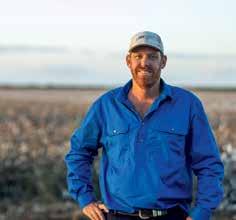
CENTRAL HIGHLANDS AGRICULTURE ON SCREEN
Our mini-documentary, Central Highlands Agriculture – the future is growing here brings to life the innovation and sustainability that define our region. It’s a visual story that complements the capabilities highlighted in this Statement.

